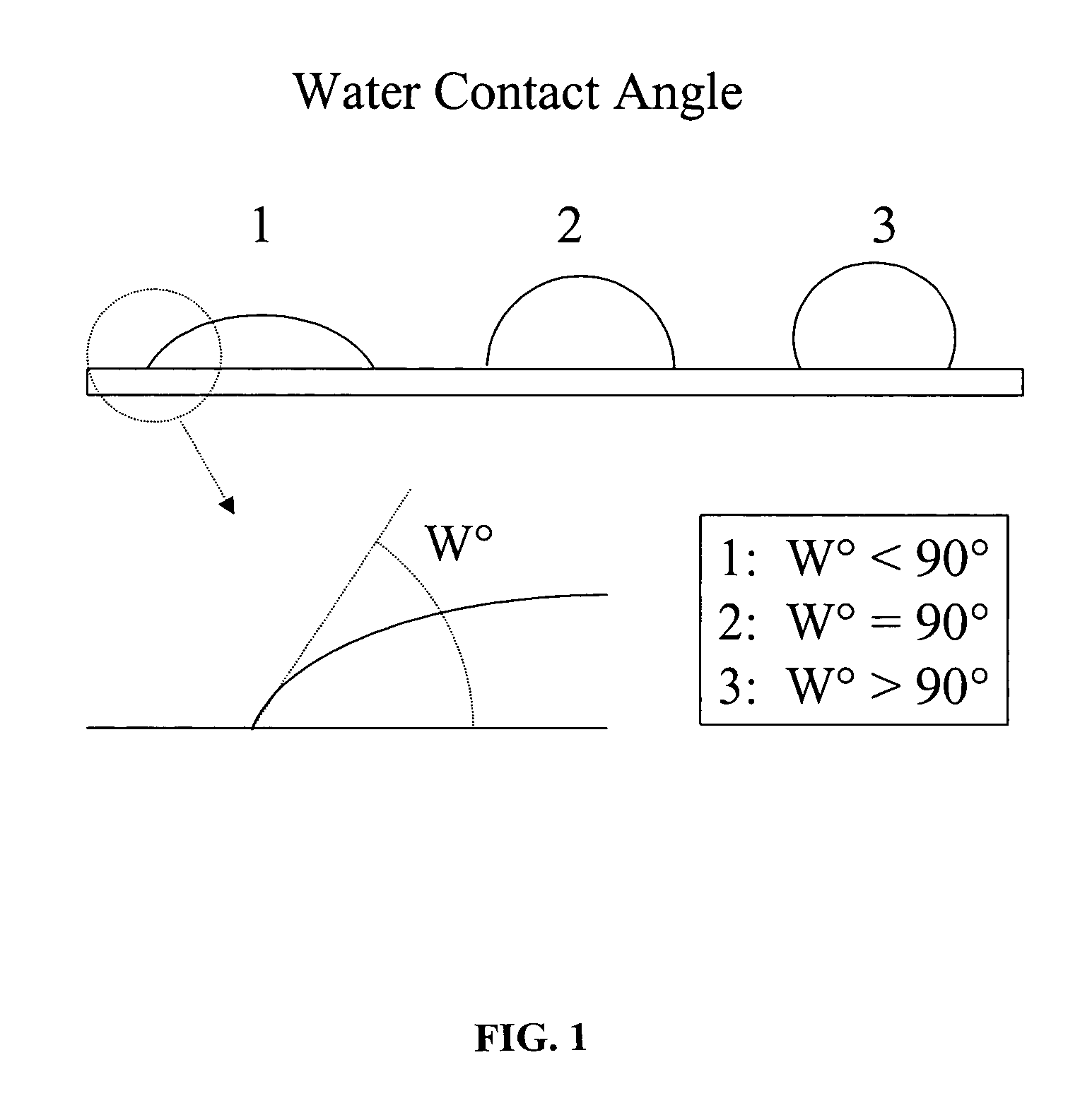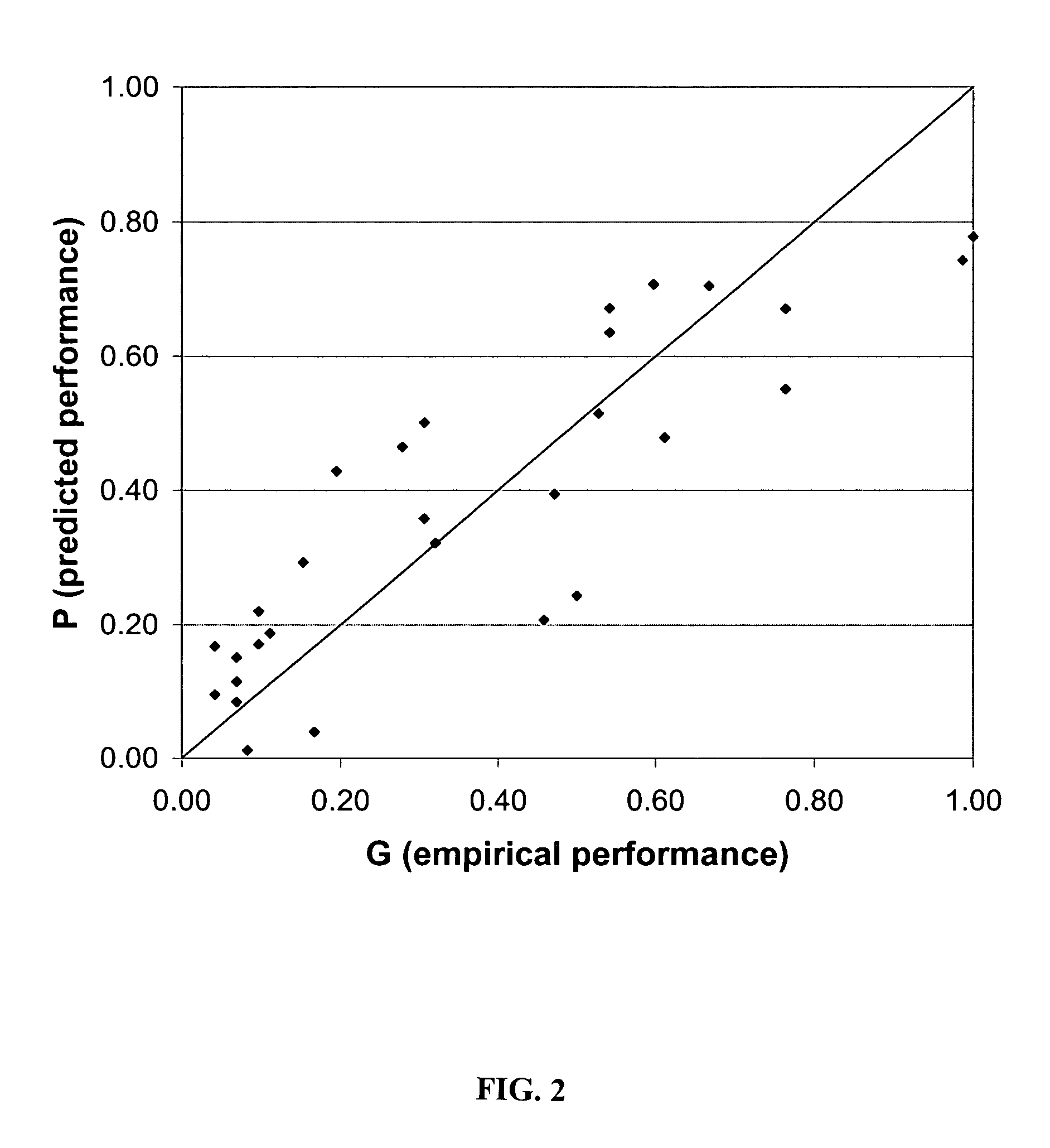Antiloading compositions and methods of selecting same
a composition and composition technology, applied in the field of anti-loading compositions and methods of selecting same, can solve the problems of reducing the performance of abrasive products, undesirable loading, and no known teaching in the art as to which of this large class of compounds is effective anti-loading agent, so as to reduce the cost, improve the efficiency and effectiveness of abrasion products and methods, and reduce the effect of loading
- Summary
- Abstract
- Description
- Claims
- Application Information
AI Technical Summary
Benefits of technology
Problems solved by technology
Method used
Image
Examples
example 1
Measurement of Empirical Grinding Performance
[0054] A commercial abrasive product that contained no initial antiloading composition, Norton A270 P500 sandpaper (Norton Abrasives, Worcester, Mass.), was employed for all tests. The experimental anti-loading agents (listed in Table 1; obtained from Stepan Company, Northfield, Ill.; except Arquad 2HT-75, Akzo-Nobel, Chicago, Ill.; and Rhodapon LM and Rhodapex PM 603, Rhodia, Cranbury, N.J.) were prepared as 30% solutions by weight in water and coated onto 5 inch (12.7 cm) diameter discs of sandpaper with a sponge brush. A back surface of the discs includes a mating surface comprising hook and loop fastening material. The experimental workpieces were steel panels prepared by painting the steel panels with a paint selected to be representative of a typical primer in the automotive industry, e.g., BASF U28 (BASF Corporation, Mount Olive, N.J.). The workpieces were ground by hand using a hand-held foam pad to which the abrasive disc was at...
example 2
Measurement of Coefficient of Friction
[0057] The coefficient of friction F for a compound was determined by preparing coated samples and measuring the coefficient of friction at about 20° C. Chemicals to be tested were coated by hand onto 0.127 mm (millimeter) polyester film (Melinex®, DuPont Teijin Films, Hopewell, Va.) using a 12.7 cm (centimeter) 8-path wet film applicator (Model AP-25SS, Paul N. Gardner Company, Inc., Pompano Beach, Fla.) with a 0.127 mm gap setting. If the antiloading agent was provided in a liquid solution, it was coated directly. If it was solid and water-soluble, it was dissolved in approximately 10 parts water by weight prior to coating (if the solution was not clear, more water was added and the solution was heated until the solution became clear, indicating that the agent can be fully dissolved). The coating was then allowed to dry inside an oven set at 80° C. for 4 hours to remove at least a portion of any remaining solvents. For zinc stearate, which is...
example 3
DSC Measurement of Melting Points
[0060] A sample of approximately 5 mg of each experimental antiloading compound was loaded into a differential scanning calorimeter sample cell (model DSC 2910 TA Instruments New Castle, Del.), and the temperature was increased until the melting point was observed. The value for each compound is reported in Table 1 as Tmelt, along with ΔT calculated from Tmelt−Tsub.
PUM
| Property | Measurement | Unit |
|---|---|---|
| Temperature | aaaaa | aaaaa |
| Temperature | aaaaa | aaaaa |
| Temperature | aaaaa | aaaaa |
Abstract
Description
Claims
Application Information
 Login to View More
Login to View More - R&D
- Intellectual Property
- Life Sciences
- Materials
- Tech Scout
- Unparalleled Data Quality
- Higher Quality Content
- 60% Fewer Hallucinations
Browse by: Latest US Patents, China's latest patents, Technical Efficacy Thesaurus, Application Domain, Technology Topic, Popular Technical Reports.
© 2025 PatSnap. All rights reserved.Legal|Privacy policy|Modern Slavery Act Transparency Statement|Sitemap|About US| Contact US: help@patsnap.com


